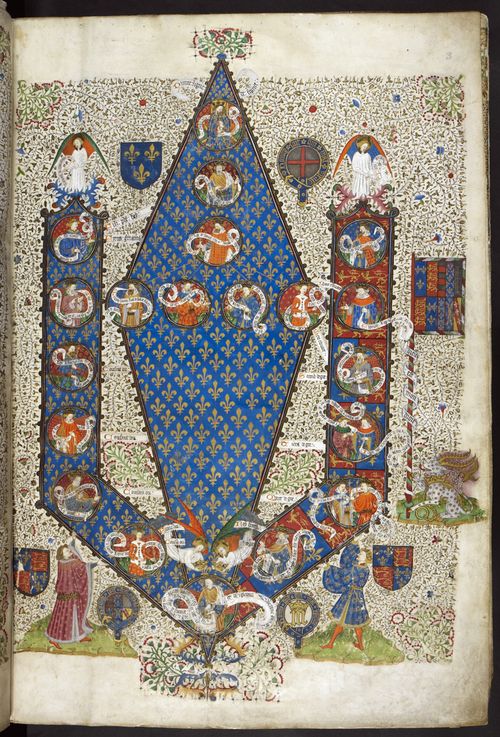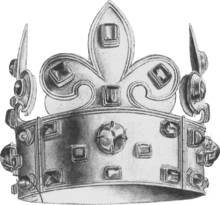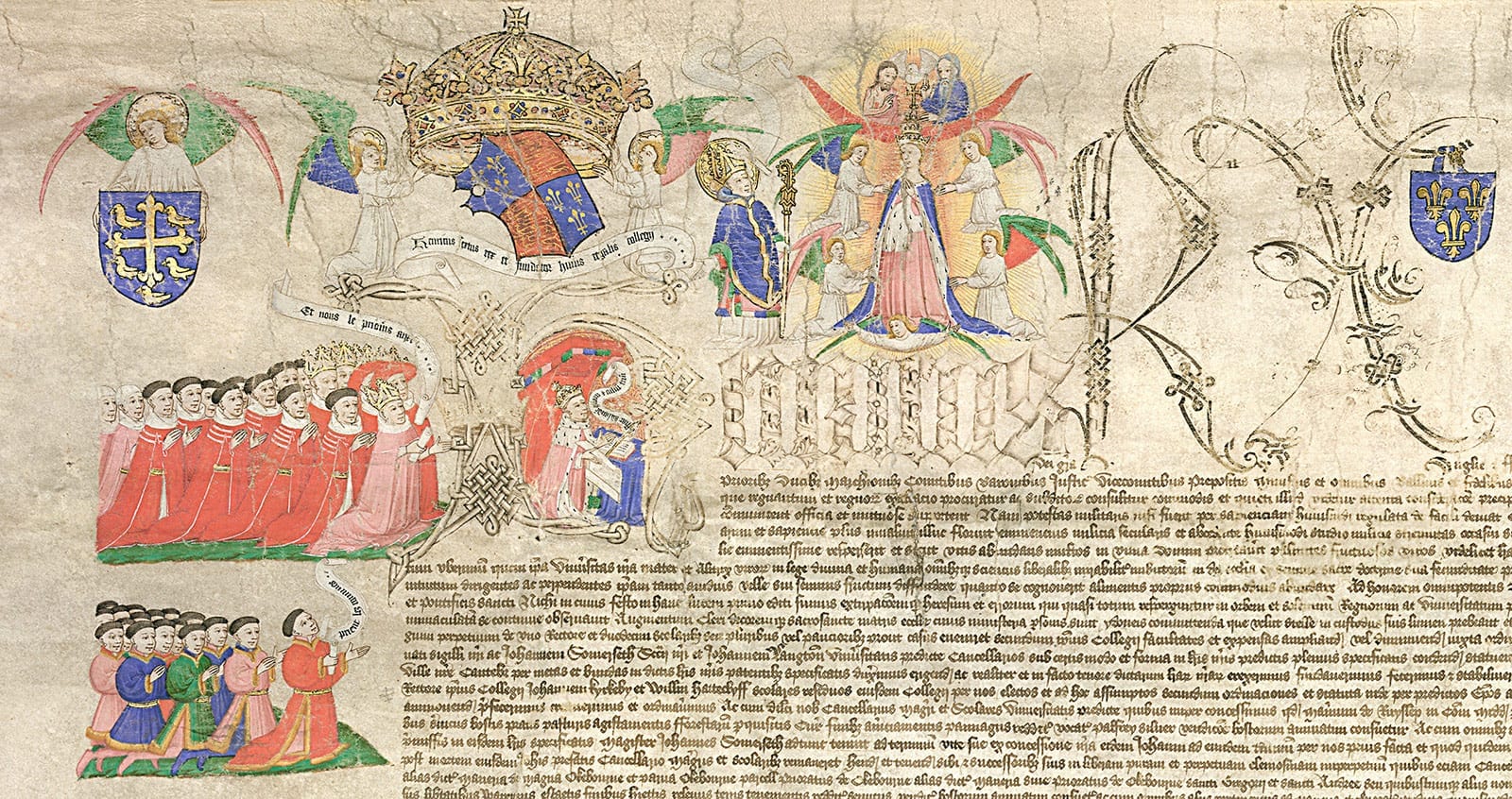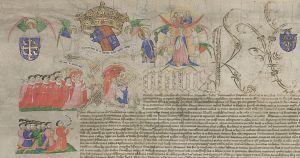590 years ago on December 16th 1431 there took place the coronation in the cathedral of Notre Dame in Paris of King Henry VI of England as King Henry II of France.
Reims, the traditional place of coronation was inaccessible and had seen the coronation of King Charles VII more than two years earlier, so Paris was chosen for the celebration of King Henry’s sacré.
He left Rouen late in November and with a substantial military escort proceeded to Paris, entering the city to a lavish welcome with tableaux on December 2nd. Accompanying him were his great uncle Cardinal Beaufort, his uncle and Regent the Duke of Bedford, his cousin the Duke of York and the Earls of Suffolk, Salisbury, Warwick, Ormonde, Oxford and Huntingdon ( later Duke of Exeter ) together with the Cardinal’s nephew the Count of Mortain ( later Duke of Somerset ). Of these secular lords five were to die violent deaths in the Wars of the Roses, as did twelve of their sons. Such a possibility was doubtless very far indeed from their minds as they entered the city and awaited the coronation.
Although the Sainte Ampiule was unavailable being at the abbey St Remi in Reims, and had been used for the coronation of King Henry’s uncle and rival King Charles VII on July 17 1429, other pieces of the French coronation regalia were available. Held at the abbey of St Denis, just north of the city, the traditional symbols or French royal authority were used. So we can assume that King Henry received the so-called Crown of Charlemagne..,,,, and the royal sceptre made for his great-grandfather King Charles V.
The Crown of Charlemagne
The circlet appears to have dated from the time of King Charles the Bald and the lilies to have been added by King Philip II 1180-1223.
It was destroyed in 1794. It’s companion piece for the Queen had been destroyed in 1590.
There is more about this at ……
Image: Wikipedia
Another picture of the Crown
One of the rubies enclosed what was held to be a spine from the Crown of Thorns.
Image: medart.pitt.edu
A reconstruction of the Crown as it may have appeared in the fourteenth and fifteenth centuries
Image: Pinterest
The sceptre of King Charles V
Image: Wikimedia
The Coronation Sword Joyeuse
It was borne at French coronations between 1270 and 1825
Image:Wikipedia
The hilt of Joyeuse
Image: 2careless on Flickr/Pinterest
The coronation was conducted and the Mass celebrated by the King’s great-uncle Cardinal Henry Beaufort, the ‘Cardinal of England’. Just over two years earlier on 6 November 1429 the Cardinal sang the Mass at the Westminster coronation, but the rite of coronation itself was carried out, as of right, by Archbishop Henry Chichele of Canterbury. Now, in what was not the usual church or diocese for a French coronation any claims of the Bishop of Paris, Jacques du Chastelier, or Châtelier, who held the see from 1427 to 1438, were ignored, and there was no role for the metropolitan, the Archbishop of Sens, Jean Nanton, whose predecessor had blessed the marriage of the young King’s parents at Troyes in 1420. Cardinal Beaufort, as the most senior cleric present, and who was, by implication, representing the wider Church, officiated.
The French chronicler Monstrelet noted that the ceremony was more after the English than the French form, but does not give details. The two rites do share many features and it would be interesting to know what adaptations were made. When, for example, nine years earlier King Charles VI died the English administration had introduced elements of English royal obsequies for the procession to St Denis, notably the robed snd crowned effigy of the King on top of his coffin. This became a feature of later burials of French monarchs, as discussed by Kantorowicz in The King’s Two Bodies
According to the later English writer Edward Hall in the sixteenth century at the feast, which I assume was held in the hall of the Royal Palace adjacent to the cathedral, and now known as the Conciergerie, which followed the Coronation everything “that might be bought for golde, nor nothing was forgotten that by mannes wish could be invented.” A contemporary French chronicler however thought the food poor - is that a leitmotif of Anglo-French relations? - and the tournament the following day was seen as unimpressive.
At the feast the Cardinal sat on the right hand of the young King to whom he gave as a keepsake a gold ring with a ruby. Fourteen years later King Henry was to have this remade as his wedding ring to give his bride Queen Margaret of Anjou.
That the events left a deep impression on the King is clear. In 1435 when the Duke of Burgundy renounced the English alliance and wrote to him as merely King of England the fourteen year old King wept and in his attempts to secure a negotiated peace in the late 1440s he refused to give up his title to France and his representatives declined to recognise King Charles VII as other than the King’s uncle in France.

A celebration of the Lancastrian Dual Monarchy
A genealogical table of the descendants of St Louis IX in the form of a fleur-de-lys, from Poems and Romances (the 'Talbot Shrewsbury book'), France (Rouen), c. 1445, Royal 15 E. vi, f. 3r
Image: British Library










